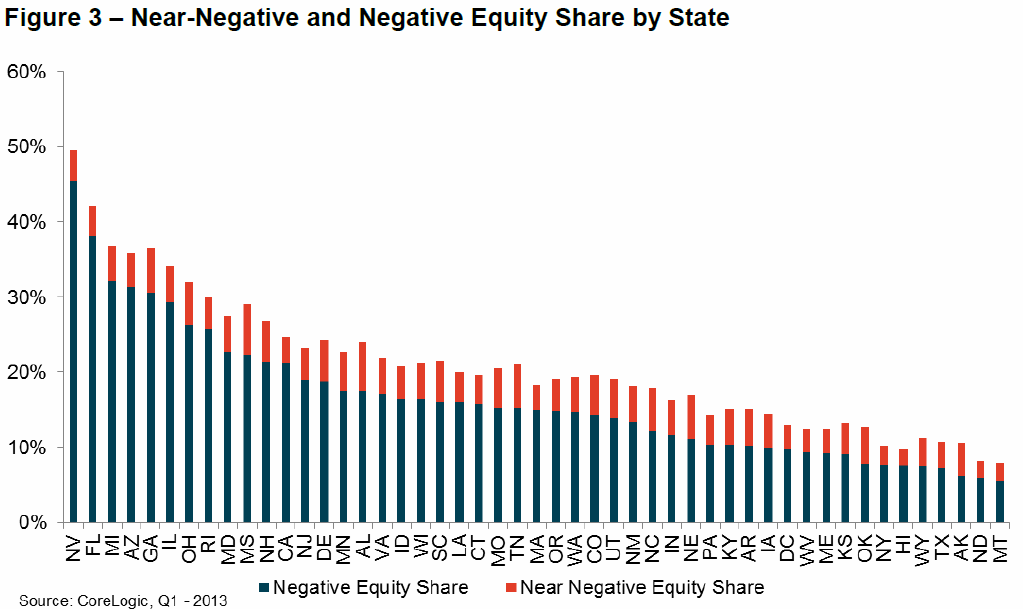Over three-quarters of a million homeowners emerged from being underwater on their mortgages during the first quarter of 2013 and 39 million households now have positive equity in their homes. However, millions of those homeowners are only narrowly in that position. CoreLogic reported Wednesday that 850,000 more homes returned to a state of positive equity between January and March.
Negative equity, often referred to as "underwater" or "upside down," means that borrowers owe more on their mortgages than their homes are worth. Negative equity can occur because of a decline in value, an increase in mortgage debt or a combination of both.
At the end of the quarter 9.7 million households or 19.8 percent of all properties with a mortgage remained underwater compared to 10.5 million homes or 21.7 percent of mortgaged properties at the end of the fourth quarter of 2012. The aggregate value of underwater property decreased more than $50 billion to $580 billion quarter-to-quarter. CoreLogic said this decrease was largely driven by rising home prices.
But many of the homes in positive territory remain on shaky ground. Of those 39 million properties, 11.2 million have less than 20 percent equity, what CoreLogic calls "under-equitied" and may have a more difficult time refinancing. Another 2.1 million had less than 5 percent equity, referred to as near-negative equity. These properties are at risk of returning to negative status should home prices fall. Under-equitied mortgages account for 23 percent of mortgaged properties. The average amount of equity for all properties with a mortgage is 32.8 percent.

Of the $580 billion in negative equity, homes with only first liens accounted for $290 billion or one-half the aggregate negative balance. The remaining half were properties with home equity loans. Among the 6.0 million upside-down homeowners with only first mortgage liens the average mortgage balance was $211,000 and they were underwater by an average of $48,000. The 3.7 million borrowers with both first and second mortgages had average total loan balances of $294,000 and were negative by an average of $79,000.
CoreLogic said that higher end properties were more likely to have positive equity than the low end. For example, 88 percent of homes valued at greater than $200,000 have equity compared with 73 percent of homes valued at less than $200,000.
"The impressive home price gains of 2012 and the beginning of 2013 have had a big impact on the distribution of residential home equity," said Dr. Mark Fleming, chief economist for CoreLogic. "During the past year, 1.7 million borrowers have regained positive equity. We expect the pent-up supply that falling negative equity releases will moderate price gains in many of the fast-appreciating markets this spring."
The highest percentage of negative equity properties were in Nevada at 45.4 percent. Florida was second at 38.1 percent followed by Michigan (32 percent), Arizona (31.3 percent) and Georgia (30.5 percent.) These top five states combined account for 32.8 percent of negative equity in the U.S.








